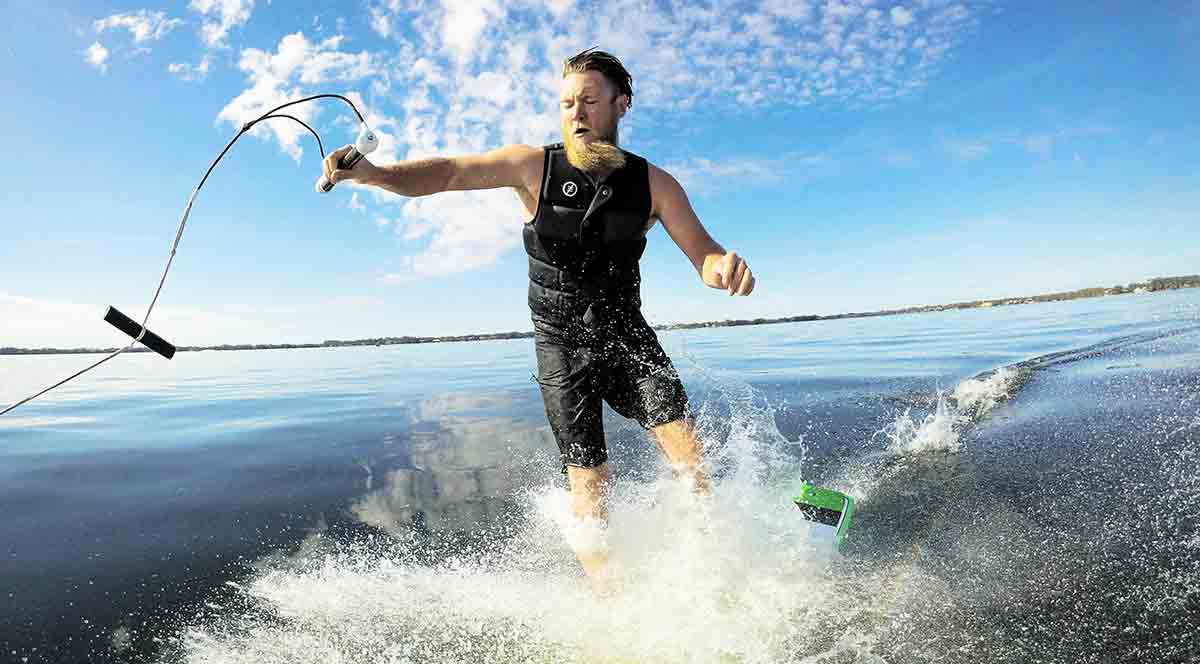
Learn How to Eliminate Wakesurf Foiling Fear
Five tips for ditching the Foiling Fear Factor. Follow this advice and you’ll be wakesurf foiling in no time.
If you’re just getting started with wakesurf foiling, we have some great news for you: It’s not nearly as intimidating as may think, and it’s a lot safer than you have probably heard. Foiling has come a long way in just a few years, and thanks to the many riders who have helped drive innovation through testing, trial and error, we now have proven designs and effective learning methods that take much of the fear and frustration out of the learning process.
Here are five tips every beginner should follow:
1. Sign up and start Foil Academy It’s the number one online learning course. It’s free! The time you spend in Foil Academy will go a long way once you’re on the water with your foil. It’s like
studying before a test- you will have less fear because you’ve done your homework and know what to expect. The lessons, tips and trick in all Foil Academy courses (kite, wake, windsurf and surf) will save you time and energy in the water and will give you the confidence you need to have fun during the learning process.
2. Start with a short mast
Starting with a short mast, even if it’s just for a short time, is by far the easiest and most effective way to reduce fear and make learning to foil easier and safer. Slingshot was the first brand in foiling to create a multi-mast package, called Foiling Flight School, and it pretty much changed the learning process overnight. No more intimidating learning curve, sketchy crashing and frustrating first days. With the Flight School system, pretty much any proficient windsurfer can learn to foil with relative ease. The Flight School package features 15”, 24” and 30” masts and allows you to progress in length as you get the feel for foiling. A shorter mast is easier to maneuver and way easier to control, which translates to more time learning, less time wiping out and less severe crashes.
3. Wear proper protective gear
This one is just common sense. Most of the fear in learning to foil comes from two things: Crashing and hitting (or being hit by) the foil. Once you’re a proficient foiler it’s much less of a worry, but until then it’s a great idea to protect yourself properly. This means a helmet, a full-length wetsuit, a lifejacket or impact vest and, if possible, booties. One of the most common injuries we see in foiling isn’t from a wipeout or high-speed encounter with the foil- it’s from inadvertently kicking its sharp edges under the water. Booties may be cumbersome, but they go a long way in protecting your feet from the foil.
4. Learn how to crash
Crashing is an art, and like any sport, once you learn to do it properly, you’ll be a lot less scared of it happening. A few key tips on crashing with a foil: Go with the crash. Once you get off balance, trying to “ride it out” can lead to a worse
- result. If you feel like you are off balance or heading for a spill, go with the crash while you still have some level of control of where you and your board ends up.
- If possible, hold on to the rope and let it pull you out of the way.
- Don’t kick the foil! It’s sharp, and when you’re first learning it’s easy to forget it’s down
there.
5. Use a rope and have the driver start slow
One of the most common ways of crashing behind the boat is by overfoiling (not enough front foot pressure) and shooting out of the water at an awkward angle. Have your driver start super
slow, with enough speed to get up on the board but not enough to get on the foil. Once you’re up and riding comfortably on the water, you can have the driver slowly increase the speed.
Combine this with your front and back foot pressure and you’ll have the hang of it in no time.

